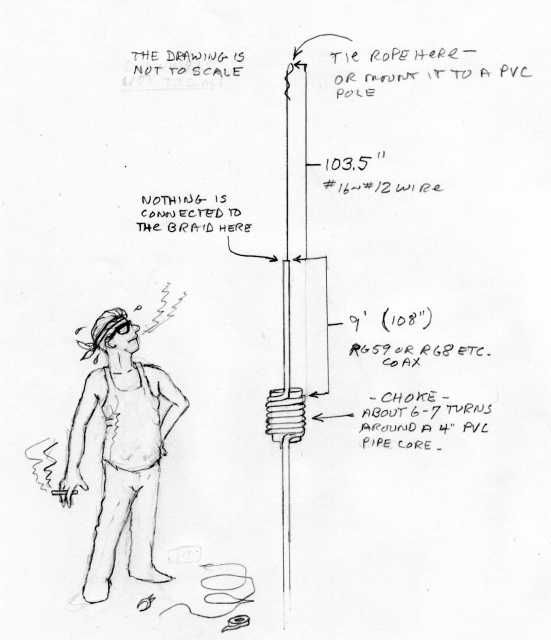OK, I think I am going to try and explain what is causing the Gainmaster type bandwidth, at least in my model above. This does involve smith charts, and while I am not going to give a full primer on smith charts, I am going to include a few here for a comparison, and give some information on them.
Pulling one up to start with, this is a center fed dipole with resonance tuned to 27.18 MHz.
There is a lot of information on here, some of which you can ignore. The green line and the pink circle for example, the modeling software would not let me remove them, or at least as of yet I haven't figured out how to remove them.
There is a horizontal center line in the chart. This line represents resonance, or X=0. It is the only perfectly straight line in the chart.
Where some lines cross that line you see some numbers. One of those number is 50. In this case it is in the exact middle of the chart. If you have trouble reading those numbers, look where the green line ends, that is the same point. I guess that unused extra information is good for something here...
The next thing to look at is the red line with the black dots on it. This represents the range of frequencies being scanned by the software and their X and R values plotted on the chart. All of these charts are using the same range of frequencies, and this is the exact same range of the bandwidth in the Gainmater like model I have above.
The last bit of information to look for here is the black circle. This information is not normally present, but I added to these for reference. The black circle represents 2:1 SWR. Everyting inside of this circle is under 2:1 SWR, with the center point I pointed out above being a perfect match.
As you can see in the chart above, the bandwidth of a center fed dipole (in this case in freespace) has a curve, part of which is inside the 2:1 SWR circle. The area within the circle represents the 2:1 SWR bandwidth of the antenna.
This next example is a 1/4 wavelength vertical antenna with four 1/4 wavelength radials.
In this case, we see a curve, again, but none of the bandwidth shown is in the 2:1 SWR or less region.
These lines show typical SWR curves for most antennas. However, as I will now show you, my "Gainmaster" model has a well placed anomaly in its curve that has a certain benefit.
In this case, see how the line that represents bandwidth enters the 2:1 SWR region, then instead of simply curving through the region like the more standard antenna models above, it makes a loop contained within the region, before curving back out of the 2:1 SWR region. This "loop" as I will call it allows the antenna to have more bandwidth in the 2:1 SWR region, thus increasing its frequency bandwidth. If you remove the matching network, this loop does not exist. If you remove the capacitor this loop does not exist. This loop only exists in the model if both are present.
I know this will only confuse some people more, but I hope for some others it helps give an idea of what is happening, and exactly how my model, and possibly Sirio as well, achieved such a wide bandwidth.
The DB





